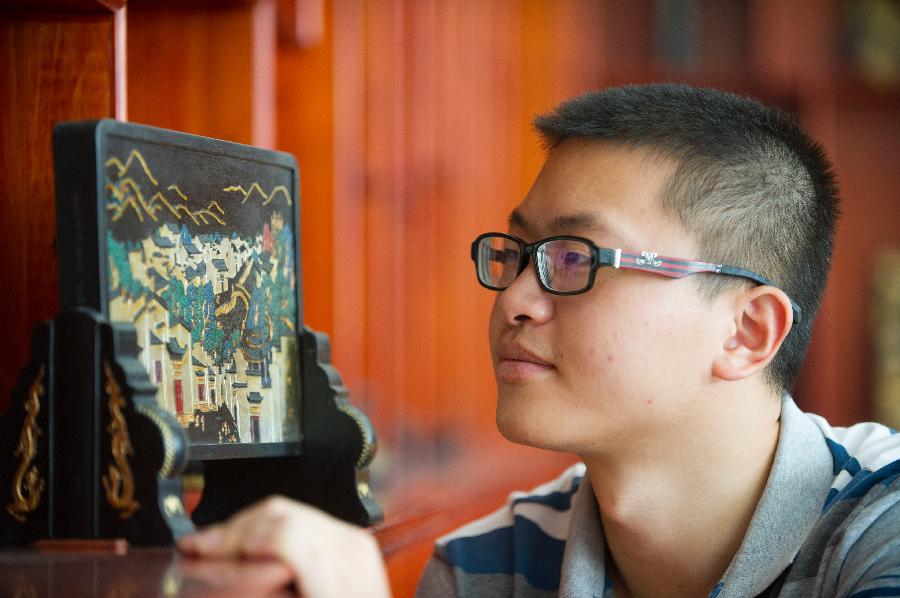 |
|
A post-90s inheritor of Huimo, a traditional inkstick from Anhui province, gazes at an artwork created with the ink by his father. [Photo/Xinhua] |
Xiang stressed that some of traditional craftsmen are limited in their cultural education and innovation ability. There is an obvious shortage of well-known brands with distinct national characteristics. Meanwhile, the overall strength and market competitiveness in the industry is far from enough.
Xiang pointed out that the project’s goal is to train more inheritors of intangible cultural heritage, improve their learning ability and their sense of innovation. Then, the project will expand market awareness and the market share of Chinese traditional crafts, and eventually take Chinese intangible cultural heritage protection and inheritance to a new level.
The pilot universities and colleges should fully consider trainees’ particular situations and use that to tailor the program to the craftsmen, such as those lacking cultural and art education or needing assistance with developing a sense of design and market, Xiang said.
The heads of the pilot universities and colleges introduced their training plans while officials from provincial cultural authorities offered suggestions.